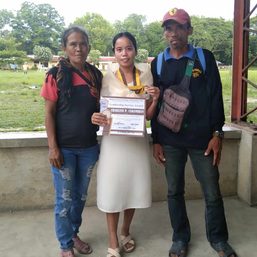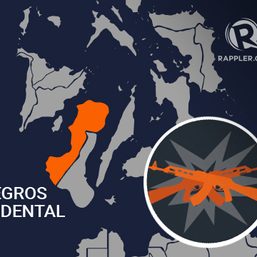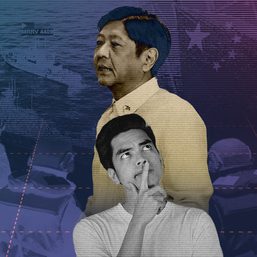SUMMARY
This is AI generated summarization, which may have errors. For context, always refer to the full article.

It is disorienting, even jarring, to hear him, poisoning the air with his threats. Rodrigo Duterte, our former president, will not fade into the shadows especially now that he has declared President Marcos his number one enemy, their short-lived alliance turned into ashes.
What’s most disturbing about his rants, though, is when he plants intrigues and goads the military into rising up against the civilian government. He is a dark undertow that tries to sweep back the armed forces into its politicized past, the failed mutinies and coup attempts of the 1980s, doing the country a great disservice.
Two thoughts seem to be running in Duterte’s head.
• First, he has this inflated sense of his influence on the military, forgetting he is an aging local politician whose time on the national stage has passed.
• Second, he regards the institution of the armed forces as his personal tool, a weapon in his arsenal to be used to serve his own interest.
New context
All this is happening at a time of geopolitical change, when the military is set to embark on a process of transformation. As China increases tension in the South China Sea with its aggressive behavior, as it keeps a covetous eye on Taiwan, and as the strength of the local communist insurgents wanes, the Philippine armed forces is shifting its mission from internal security to territorial defense.
This is historic as it comes after more than half a century of fighting the New People’s Army (NPA), the longest running communist insurgency in the world.
“There was a time when we did not have to worry about these threats [South China Sea] and the intensification of competition between the superpowers,” Marcos said. “…The AFP’s mission has changed.”
The President has “set the tone, amplified by the defense secretary and the chief of staff,” Commodore Roy Vincent Trinidad, Navy spokesperson on the West Philippine Sea, told me. “The AFP will look at the entirety of the country, not just barangays, and widen its perspective to a global [one], beyond Ayungin…not just the West Philippine Sea.” Trinidad is also deputy commander of the Philippine Fleet.
Finally, the Navy is finding its place in the sun. Among the armed forces units, the Navy has always been attuned to external defense, its sights on the vast waters. After all, the maritime zone of the Philippines is much larger than its land area.
General Romeo Brawner Jr., who is allowed by law to stay for a maximum term of three years as chief of staff, will preside over the start of this transformation, which will entail a deepening of what Marcos calls “archipelagic consciousness” to boost the country’s territorial defense.
Modernization
Key elements of the transformation process are the acquisition of warships, fighter planes, radar systems, cyber-security equipment, among others, and the upgrading of skills through joint exercises with allies and like-minded countries such as the US, Australia and Japan.
The modernization of the military is a 15-year program that began in 2013. Dubbed Horizon, it was designed in three phases. Now on its third and last phase, from 2023 to 2028, Horizon 3 has been updated to address external threats.
Defense Secretary Gilberto Teodoro said in a recent speech that the revised acquisition plan will focus on “an array of capabilities which will range from our domain awareness, our connectivity, our intelligence capabilities or C4iSTAR (command, control, communications, computers, intelligence, surveillance, targeting acquisition and reconnaissance) … to our area denial and deterrence capabilities on both the maritime and the aerial domains.”
Duterte’s internal threat
When he was president, Duterte always said that the NPA was the number one security threat to the country. He focused on the domestic communists despite the continued incursions of China in the West Philippine Sea. At the time, he was locked in China’s embrace and thus didn’t want the military to regard China as a threat.
This was a turnaround from his predecessor’s position. The government of then-president Benigno Aquino III considered the maritime dispute in the West Philippine Sea as the number one source of threat. In 2015, “[in view of] reports of massive reclamation projects in our exclusive economic zone, it is now very clear that our territorial disputes in the West Philippine Sea have in fact overtaken all security issues in our hierarchy of national security issues,” then-national security adviser Cesar Garcia Jr. said in a Senate hearing.
Former military chief, retired general Emmanuel Bautista, takes us back to history and says that territorial defense has been the traditional role of the armed forces. However, the entire AFP was gradually called upon to fight internal threats since the 1960s. “Weaning away the AFP from internal threats will be a gradual process, part of a long-term plan,” he told me.
It was under Aquino’s presidency that Bautista led the military (2013-2014). At the time, he said, they were already starting to think of the big shift to territorial defense.
So when we hear Duterte’s reckless talk of destabilization by the military, it throws us back to years gone by, so old and passé. His rants should just be treated as background noise.
Let me know what you think. You can email me at marites.vitug@rappler.com.
1 comment
How does this make you feel?












![[EDITORIAL] Kalaban mo ang mga senador na protektor ni Quiboloy](https://www.rappler.com/tachyon/2024/03/animated-quiboloy-kojc-senate-carousel.jpg?resize=257%2C257&crop=365px%2C0px%2C720px%2C720px)
I agree with this prioritization shift from internal to external threats. Thanks to President Marcos Jr. for such a shift and General Romeo Brawner Jr.’s support to the former. I hope that both can focus on such a shift and create and maintain the corresponding policy. But once in a while, check that “gun collector” in Davao City and that Glorious Mountain in the same City for the possibility of constructing tunnels and bunkers (or they might have been already built) in the service of their hidden or already verbalized agenda.